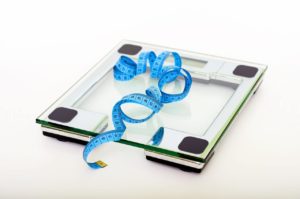For many parents, the pacifier is a real blessing: If your offspring nag you incessantly and can’t be calmed down by anything, the pacifier usually quickly provides peace and contentment. But the pacifier can quickly become an annoying habit. Some children don’t even want to go to sleep without the pacifier, while others are reluctant to give it up even during the day. Fortunately, modern soothers no longer pose a risk to the jaw or health – at least not during the permitted soother period. But at some point, that should be the end of it.
Table of contents
Babies Are Allowed To Suck
Most unborn babies already suck their thumbs in the womb. The little ones have a natural sucking reflex to always drink the sufficient amount of milk for their life from the mother’s breast. However, sucking also has a relaxing and calming effect.
Sigmund Freud named it the oral phase, in which the emotional world is experienced primarily through the mouth. In addition, when sucking, the body produces digestive proteins that have a calming and sleep-promoting effect at the same time.
When a baby is excited, he or she sucks more intensively and more quickly and thus calms down again quickly. Sucking thus reduces tension and excess energy. In addition, pacifying can help develop an initial sense of autonomy and self-worth.
The First Pacifier
Parents should not introduce a pacifier, however, before their baby has developed a stable and regular drinking pattern at the breast (or bottle). They should also take into account that between the ages of 6 and 12 weeks, children often go through developmental spurts in which they want to drink longer and more intensively. And, of course, physical contact and direct communication with the baby continue to have priority despite the pacifier.
In addition, parents must be aware that the more often and longer the baby has the pacifier in his mouth, the more he will be restricted in his murmuring, smiling, babbling and speech development.
The soother should not be used as an “emergency stopper” to silence the child when he cries. Used carefully and only in certain situations, it can provide relaxation for parents and child. In this way, the child sucks more actively and healthily without becoming accustomed to constant sucking.
Disadvantages Of The Pacifier
The well-known side effects of the pacifier, such as jaw and speech problems, occur when a child misses the time for weaning and pacifies for too long. Serious deformities of the jaw and palate can develop as early as the second year of life.
This leads to the so-called open-sucking bite, with crowding of the teeth, misalignment of the teeth, a tendency to ear, nose and throat infections (especially ear infections), speech defects such as lisping in particular, and tooth decay.
Thumb Sucking
Even though some babies prefer their thumb to a pacifier, there is no acute cause for concern at first. The thumb has the advantage for the child that it is always available and it can “dose” it itself. In the longer term, however, thumb sucking leads to more severe tooth misalignment and jaw deformation. They are less flexible, anatomically less suitable and exert more pressure on the palate than a soother. In addition, the thumbs tend to become inflamed in the area of the nail bed.
Above all, however, it is usually more difficult to wean a child off the thumb than off the pacifier. Children who suck on a pacifier usually give up this habit sooner than thumb suckers. At three years old, twice as many children still suck their thumbs than there are pacifiers – although there are more pacifiers than thumb suckers to begin with. If parents find that their baby is thumb-sucking to calm down, it is advisable to offer him or her a jaw-friendly baby teat as an alternative at an early stage.













1 thought on “How You Handle The Pacifier; Strategies For Pacifier Weaning”